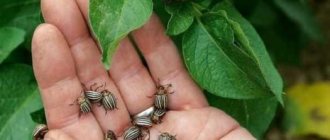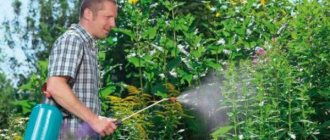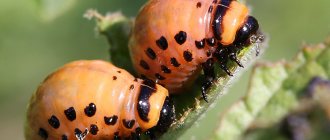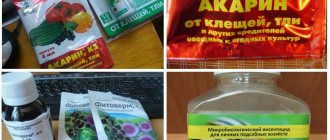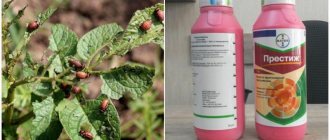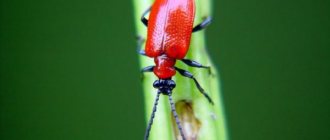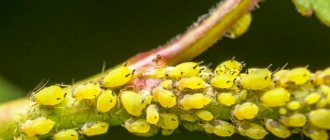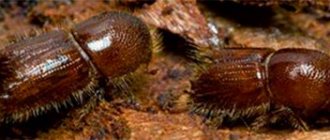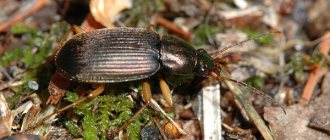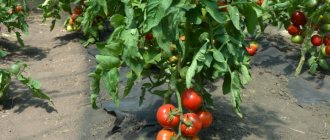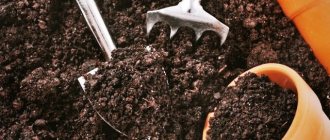The cockchafer is one of the most intrusive and dangerous garden pests. Its larvae grow and develop in the soil at a depth of about 10-15 cm, they are quite mobile and actively eat the roots and leaves of everything they meet on the way. The adult May beetle itself does not disdain the foliage systems of a wide variety of agricultural, fruit and ornamental plant crops. In a word, as soon as it is born, it begins to methodically destroy literally everything that you grow on your site. Therefore, if your plans do not include sharing your harvest with this very voracious insect, now is the time to give it a worthy rebuff.
- 2 Natural enemies of the cockchafer
- 3 Fighting the cockchafer using folk methods
- 4 Chemical and mechanical methods of pest control
4.1 Plants that the cockchafer in the photo does not tolerate
Description of the cockchafer and its larvae
Chafer
Adults are large, reach 3.5–4 mm in length and are black or red-brown in color. The body is soft, barrel-shaped, covered with dense hairs. It is elongated and passes into a process at the back.
The body consists of 3 sections: head, chest and abdomen. On the head there is a mouth, a pair of compound eyes consisting of many simple ocelli. In front of the eyes there are antennae with expanded plates at the end. These are the insect’s olfactory organs; in males they are more developed.
The beetles have 3 pairs of legs on their chest, and on their back the wings are protected by hard, elongated elytra. Insects have sharp jaws; with the ends of the upper jaw they bite off pieces of leaves, and with the lower jaws they grind them.
In addition to the digestive organs, chafer beetles, like other arthropods, have developed circulatory, respiratory, excretory, nervous and reproductive systems. Externally, males differ from females in the size of their antennae; they are longer and curved.
The larvae do not look like adult beetles. They have a thick, soft and arched body of a whitish color, 3–5 cm long. A large head and three pairs of legs are distinguished by a yellow-brown color. The wings are not developed, but there are spiracles on the sides of the body.
From a larva, the pest turns into a pupa, which in appearance is already similar to an adult cockchafer. The pupa has a formed head with antennae, compound eyes and legs. The wings are shorter than those of an adult insect, the chitinous cover is dense and without a characteristic color. The pupa moves slightly, but cannot move or absorb food.
There are 6 species of cockchafer found in our country. The most common are the western and eastern types. They are similar to each other and differ only in the structure of the abdomen.
Features of pests
Spring pleases summer residents with the opening of the next season, but with the onset of warmth, very unpleasant “guests” appear on the plots - May beetles. Adult insects and their larvae pose a danger to garden and vegetable crops, therefore, if you find them on your site, take measures to catch and destroy them. For the fight to be effective, it is important to know the characteristics of beetles, their life cycle, habits and preferences.
The emergence of the beetle in the middle zone begins in late May-early June
The May beetle is a large insect, 3.5-4 cm long. The body is covered with a durable chitinous shell. The long elytra are colored brownish-brown, chocolate or reddish, the segmented abdomen and small head are usually darker. The body and head are covered with numerous hairs, and the end of each of the 6 legs is equipped with a curved claw. The edges of the antennae are decorated with “fans” consisting of several long plates. Adult individuals (imago) feed on the foliage of trees and shrubs, flowers and young fruit ovaries.
The flight of the cockchafer in the middle zone begins in late May-early June . Individuals of different sexes mate, and then each female burrows 20-30 cm into loose soil and lays about 20 whitish, round eggs with a diameter of 1.5-2.5 mm. Over the course of one and a half to two months, she repeats the clutch 2-3 more times, actively feeds in between, and then dies.
The larvae hatch after 30-40 days. They look like large worms, yellowish-white in color, with hard, light brown heads and sparse dots of the same color on their sides. They develop slowly : in warm climates it takes 3 years, and in cooler climates – 4 years. In the summer they feed, and closer to winter they leave the top layer of soil and settle down for the winter at a depth of 100-150 cm. At the end of the summer of the last year of development, the larvae, already 45-65 mm long, rise closer to the surface of the earth and pupate. After 30-45 days, full-fledged beetles emerge from the pupae and remain to overwinter in the ground. Only next spring do they wait for the necessary warming of the soil and dig tunnels to the surface.
In the first season of life, the larvae feed mainly on humus, but starting from the second year they begin to actively eat the roots of trees and shrubs, as well as garden plants. Crops such as potatoes, beets, carrots, onions, corn and strawberries . Danger threatens berry bushes (raspberries, currants, gooseberries, grapes, honeysuckle) and young fruit trees (cherries, plums, apple trees, sweet cherries and sea buckthorn). Of the ornamental plants conifers (larches, fir, pine, etc.), deciduous trees (including acacia, chestnuts and hazel), as well as flowering perennials (lilies, clematis, roses, etc.) are severely affected.
It has been established that one older larva is capable of completely gobbling up the roots of a two-year-old pine tree in just one day.
The larvae develop slowly: in warm climates it takes 3 years, and in cooler climates – 4 years
To preserve vegetable and other crops, it is important to promptly begin the fight against beetles and their offspring, using an integrated approach.
Life cycle of a pest
The insect goes through 4 stages of development: egg, larva, pupa, imago (adult). With the arrival of spring after the leaves bloom, the summer of the May beetles begins, coming out of hiding. It lasts 1–1.5 months. At this time, mating occurs and in June the females lay eggs in the soil to a depth of 10–20 cm. Oviposition can be found not only in the ground, but also in the hollows of old trees. Each female lays up to 70–80 pieces and then dies.
After 4–6 weeks, thick yellow-white larvae emerge from the eggs. This stage is the longest, it takes place underground for 3–4 years. The larvae have 4 stages of maturation, accompanied by summer molts. In the first year, when the oral organ is not formed, young larvae feed on humus and small roots; from the next year their appetites grow and the larvae switch to feeding on the roots of trees, vegetables, and shrubs.
In warm weather, the larvae rise to the soil surface into the root layer, and with the arrival of winter they go 50–70 cm deeper. As they grow older, they become more dangerous. The pest grows and needs more food.
The larvae turn into immobile pupae at the end of the cycle - at the end of summer or at the beginning of autumn. After 1.5 months, the chitinous cover of the pupa bursts and adult insects appear. They will remain deep underground until spring comes.
Adult beetles live 1 year. It has been noticed that after 25–30 years there is a sharp increase in the number of pests. This is preceded by 3–4 years of decreased insect activity.
How is this parasite different?
The first feature that catches your eye is its gluttony. It is believed that its homeland is North America. He remained in the shadows for a long time until he began to rapidly destroy entire potato plantations. The pest is easy to distinguish from other similar parasites, since it grows up to 2 cm in length, and its body is covered with a shell of red or bright orange chitin. Until the 40s of the 20th century, this pest did not yet exist in Europe. He happily eats not only potatoes, but also tomatoes, eggplants, peppers, etc. As a rule, the greatest danger is posed by the larva of the cockchafer, which penetrates into the soil along with humus. After wintering, insects climb out of the ground to the surface in search of food. Insects wait out cold and frost at a depth of about half a meter, so fighting them is not easy.
With the arrival of spring, female cockchafers begin to lay eggs, after which larvae emerge from them, and they are quite voracious and eat everything that comes in their way. Externally, the larvae look like white caterpillars with many small legs. They live for about 4 years. The larvae are armed with quite powerful jaws, as a result of which they can destroy the root system of any tree, not to mention garden crops.
Somewhere in the height of summer, the larva begins to develop into a pupa, which resembles a real adult cockchafer. By autumn, the pupa turns into an adult, which overwinters in the ground at great depths. This allows the cockchafer to survive the harshest winters.
The persistence of this parasite is related to many factors . For example:
- In Europe, the cockchafer has practically no natural enemies, compared to its homeland.
- If there are no favorable conditions and there is not enough food, then the cockchafer can be in a state of suspended animation for 3 years. After this period, the parasite is able to come to life and begin its “violent” activity.
- Female insects lay eggs at great depths, so no agricultural measures can affect this process. Therefore, the destruction of such pests must be carried out during the period of their active life.
- The cockchafer has strong wings, so it can easily fly a distance of 10 km. As a rule, they migrate in entire colonies in search of food. At the same time, they capture significant territories.
- To destroy this parasite in a vegetable garden or garden plot, you need to put in a lot of effort and money.
Despite this, many effective means have been developed that can cope with the invasion of the cockchafer. At the same time, it must be remembered that chemical control agents require special protective equipment, otherwise they can harm humans, although in our time drugs with minimal toxicity are produced.
Interesting! The favorite delicacy of cockchafer larvae is the root system of garden strawberries or wild strawberries. If you notice that strawberry bushes have begun to fade just like that, without obvious reasons, then you need to dig them up immediately. As a rule, the larva of the cockchafer is also located here. If you don’t do this, the larvae will simply mow down every single bush, not a large plantation of this delicious and healthy berry.
Fight against cockchafer larvae.
Signs of plant infection
Adults feed mainly on leaves. They eat or make holes in leaf blades, damage buds, ovaries and flowers . Because of this, the process of photosynthesis in plants is disrupted, they weaken and wither.
The larvae cause more harm; they are voracious and damage plant roots ; 3–5 pieces can completely destroy the root system of a young tree . Even minor damage makes the plant vulnerable to pathogens. Young plants wither and are easily removed from the ground , and adult specimens, having a reserve of vitality, do not die, but slow down their development. Yields of vegetables and fruits are reduced, side shoots on trees do not ripen well.
Adult insects and larvae are easy to detect on above-ground parts and in the soil and make sure that they are the cause of crop damage.
What does a mole cricket larva look like?
Having discovered a mole cricket nest, you may notice several hundred eggs in it. The size of each of them is up to 3 mm. They may have a red or brown tint. If you look at an egg under a microscope, you can see a living worm inside. It takes about two weeks for the eggs to mature. It all depends on how favorable the conditions are.
What does a mole cricket larva look like?
The eggs hatch into small, blind, bug-like creatures. During this period of development, they feed on the shell and maternal saliva. Within a week, molting occurs. Having increased in size, the larvae become similar to adults. The time for complete formation of the larva is influenced by the favorable environment. As a rule, this takes 1.5-2 years. During this time, the insect molts about ten times. After each molt, the size of the larvae increases. At the final stages, reproductive organs are formed, which allows insects to begin to reproduce.
The mole cricket larva is very similar to the adult. The development stage does not include the transformation of the larva into a caterpillar, pupa and butterfly. Throughout its development, the insect remains in the form of a bug, which increases in size over time. At the last stage of formation, the larva reaches a length of 5 cm. The adult can reach 12 cm.
Reasons for the appearance of the pest on the site
May beetles prefer sandy soils ; they are less common in heavy clay areas. It is more convenient for females to lay eggs in uncompacted soil. They love well-groomed and cultivated gardens and vegetable gardens ; here they have favorable conditions - nutritious soil, many plants, compost and humus heaps .
The life activity of the larvae is affected by temperature and humidity. High humidity is detrimental to them, and when the temperature rises above 25°C, they sink to great depths. During spring cold snaps and recurrent frosts, the cockchafers freeze and may die.
Pest numbers are reduced by exposure to fungi, bacteria and parasitic nematodes.
Bronzovka, or green May beetle
The cockchafer is often confused with the bronze beetle, which, unlike the hero of our article, is green. The bronze beetle is not a May beetle, although these insects belong to the same family, that is, they are close relatives.
The life cycle of a green insect from egg to adult is 2-3 years. The female bronze bird lays eggs very often in anthills. Bronzewort does not cause any particular harm, because it appears after the flowering of cultivated plants. It feeds on plant flowers and is listed in the Red Book.
What crops does the pest affect?
Chafer beetles are polyphagous and damage many crops. Adult insects gnaw leaves and ovaries of poplar, oak, maple, birch, aspen, alder, walnut, linden, willow, elderberry, acacia, elm, honeysuckle, alder, rowan, and rosehip .
The insect can be seen on fruit trees and shrubs: apple, plum, cherry, grapes, sea buckthorn, black currant, gooseberry . Beetles love the needles of pine, spruce, larch, and cedar . Only the ash tree is lucky; the pest avoids it.
The larvae feed on the roots of these trees, roots and root crops of vegetable crops: potatoes, onions, beets, corn, sunflowers . The larvae cause great damage to strawberry .
What do cockchafers eat at home?
Adult cockchafers mainly feed on leaves, flowers and shoots of trees and shrubs (currants, gooseberries). Among the trees they prefer are apple, plum, cherry, oak, birch, rowan, maple, etc.
But the larvae cause damage to plants, especially in the second year of life. The larvae are very voracious and feed on the roots of fruit crops: carrots, strawberries, potatoes, beets, corn, etc.
But beetles practically do not live at home, since it is extremely difficult to replicate the natural atmosphere. However, this does not bother many children and keeps it in a jar or matchbox.
How to get rid of cockchafer larvae
Chemical and biological drugs
Antikhrushch
The insectoacaricide affects the nervous system of the pest, paralyzes it and the larvae quickly die. Indirectly, the drug reduces the risk of viral and fungal diseases.
Before planting potatoes, the soil is sprayed with a working solution at the rate of 10 ml of product per 5–10 liters of water. This volume is designed to process 1 hundred square meters.
To soak the roots of vegetable seedlings and fruit tree seedlings, dilute 10 ml in 3 liters of water.
The soil around strawberries, berry bushes and fruit trees is watered with a solution of 10 ml of the drug and 5 liters of water.
Vallar
According to reviews from summer residents, this new drug is one of the most reliable in the fight against May beetle larvae. 5–6 granules are scattered around the plants in the root zone and embedded in the soil to a depth of 5–10 cm.
Before planting, a mixture of an insecticide solution with soil is prepared to treat the roots of seedlings of fruit and ornamental plants. 3 tsp of the product is added to 200 ml of water and stirred. Pour soil into the container, add the solution and pour in more water, bringing the volume of the “chatterbox” to 1 liter. The roots are dipped into this mass before planting.
Zemlin
Once in the pest's body, the insecticide blocks basic life functions. The larvae cannot move, absorb food and soon die. Granules of the drug are applied to the ground when planting plants in holes or during the growing season at the rate of 30 g per 20 square meters. m.
Bazudin
Contact insecticide with intestinal action based on diazinon. The consumption rate of the drug is 30 g of granules per 20 square meters. m. landing. They are first mixed with dry sand or sawdust, the soil is loosened and the mixture is scattered evenly.
Initiative
An effective contact action drug. Shows protective properties during the first day after use. 30 g of microgranules are poured into a 1 liter container of dry sand, mixed and evenly scattered around the root zone.
Nemabact
A unique biological product for pest larvae based on beneficial nematodes. The contents of the package (foam rubber crumbs) are poured into a colander, which is placed on a bucket and washed with water (10 l), periodically squeezing out the crumbs. The resulting solution is stirred and used to water the soil.
Traditional methods
- Plants are watered at the root with a strong infusion of onion peels. Half the bucket is filled with onion peels, hot water is added to the brim and left for a day. The infusion is filtered, but not diluted before use.
- Ammonia will repel larvae from the area. Dissolve 20–30 ml in 10 liters of water and water the soil. This treatment is also good as a preventive measure for strawberry bushes.
- To prevent the pest, potato seedlings and vegetable seedlings are watered with a solution of potassium permanganate (3–5 g per 10 liters of water). The soil has been watered with the indicated solutions since May, when the pest has already risen to the root layer.
- Mustard clears the area of larvae; they do not like the smell of this plant. Starting in spring, the row spacing and soil around the trees are sown with mustard or other cruciferous crops. When the green mass grows, it is embedded in the soil.
- Planting leguminous plants has a similar effect on the pest: lupine, beans, peas, beans. The soil under trees and shrubs can be covered with white clover. On the roots of this plant, as well as on legumes, bacteria are formed that participate in the accumulation of nitrogen in the soil. The cockchafer larvae cannot tolerate this.
- In May, adults are collected by hand. In the morning, insects are inactive, so when they are spotted, the branches of trees and shrubs are carefully shaken off, the beetles are collected and destroyed.
- Traps are built to catch insects. Plastic bottles with cut off necks are hung on trees. Sweet fermented liquid (compote, diluted jam, kvass, beer) is poured into containers.
- The cockchafer is attracted to any light source at night. Therefore, the trap is installed next to a switched-on flashlight or light bulb. The bait can be a wide container of water: a basin, a bucket, a bowl.
- For another option, the inner walls of an empty container are coated with any viscous and sticky substance. The insects that fly to the light will fall into a trap; in the morning all that remains is to collect and destroy them.
Drugs that help fight worms
Today there are many products on sale, the use of which can significantly clear a heavily infested area of pests.
Common means of multidirectional action
Most often, summer residents use:
- contact-intestinal insecticides acting mainly on larvae of the first year of life - “Zemlin”, “Pochin” (“Pochin”). They are produced in the form of powder or microgranules, which are embedded in the top layer of soil during spring digging, approximately 15-20 g per 10 square meters. m. Young pests absorb the poison along with humus and die within 3 days;
- preparations of contact-intestinal action (“Vallar”, “Bazudin”, “Aktara”), active not only against beetleworm, but also against other soil pests - wireworms, mole crickets, etc. They are produced in both dry and liquid versions. They can also be applied to the surface layer of soil, or used to treat plant roots before planting. For example, this is what they do when they want to get rid of cockchafer larvae on strawberries as much as possible. Prepare a solution of the drug according to the instructions on the package, and use it to etch the roots of young bushes intended for planting in a new bed;
- means of long-term exposure (for example, “Antikhrushch”). It is sold in the form of a suspension, which must be diluted with water (the amount of the drug in the solution for each crop is indicated on the packaging). The resulting liquid is used to treat the roots of the seedlings, and the plants already on the site are poured under the roots;
- "ammonia water" ; the working solution is prepared from ammonium nitrate (200 g per 10 liters of water). This amount is enough for 1 sq. m. of the future garden bed. 3-4 months before planting, the soil is carefully dug up and spilled with the preparation. The method is very effective. It allows you to get rid of cockchafer larvae in the ground for several years, but in the middle zone it is only suitable for summer-autumn plantings.
Procedure for using insecticides:
- Read the instructions on the package carefully.
- Take the necessary safety measures - wear gloves, a respirator, and prevent access to toxic chemicals from pets and children.
- Dilute the drug as directed and use as directed.
If folk remedies are ineffective, use insecticides. When working with pesticides, strictly follow the instructions on the packaging and observe safety precautions
Biological products
In addition, there are popular biological products (“Nemabakt”, “Fitoverm”, “Boverin”, “Aktofit”), which can be used if the number of beetle larvae in the soil is not very large. Such products include natural enemies of the pest: microscopic nematode worms, pathogenic microorganisms (bacteria or fungi).
The use of biological products in recommended concentrations does not pose a danger to people, domestic animals and beneficial insects, and does not have a negative impact on the garden ecosystem as a whole.
Prevention
- The simplest agrotechnical method against the pest is spring digging of the soil in the beds and in the tree trunks. At this time, the larvae are easy to spot. Tillage is mandatory for virgin areas. On such lands there is always a large concentration of the pest.
- The garden and garden are kept clean throughout the season and weeds, especially wheatgrass, are destroyed in a timely manner. It attracts not only wireworms, but also cockchafer larvae.
- Mulching the soil is useful. A loose layer of crushed straw and wood shavings prevents females from laying eggs.
- The pest has many natural enemies, including various birds, hedgehogs, ground beetles, and moles. To attract birds, you can install several birdhouses on the site. They will save plants from damage by both adult beetles and larvae.
If you do not hesitate and use the whole range of measures, then all attacks of the cockchafer and larvae can be successfully repelled and make your area unattractive to the pest.
You will learn more about how to deal with cockchafer larvae from the video.
Chemical means of combating the cockchafer
Antikhrushch
The most popular and effective insecticide against Khrushchev. It contains two new generation active ingredients - imidacloprid and bifenthrin, which interact and complement each other. Due to its combined action, the insecticide provides reliable protection of cultivated plants not only from beetleworm, but also other pests. This drug protects against May and Colorado potato beetles and their larvae, as well as against aphids, wireworms, mites, thrips, whiteflies, codling moths, and leaf rollers.
- To protect potatoes, you should spray the plant before planting with a solution of 10 ml of the drug per 5-10 liters of water. This should be enough for 1 hectare of land.
- To protect cabbage and tomatoes, a 10 ml solution is made. substances per 3 l. water, before planting, the rhizomes are soaked in the solution for 1 hour, the remaining liquid is diluted in 10 liters. water and are used for irrigation.
- To protect fruit and berry trees, a 10 ml solution is prepared. Antikhrusch for 5 l. water (enough for 0.2 acres), the solution should be watered generously at the root. Seedlings of simple trees are also treated at the root with a solution of 10 ml. substances per 3 l. water.
Modern drugs
Modern developments in the field of agriculture are extremely popular. After all, many of them do not harm the human body and are harmless to plants.
One of the most popular remedies against cockchafer larvae is Nemabact. This is a bioinsecticide. It perfectly fights insects in the larval stage. The main component of the drug is nematode. This is a microscopic worm. It easily penetrates the soil and feasts on pests. He does this in a non-standard way. Nematodes penetrate the larva, feed on it and leave offspring. A few days later the parasite dies. After another three days, the corpse of the larva leaves the worm's offspring in search of a new victim.
This product allows you to protect the crop from many pests. At the same time, it is absolutely safe for humans and pets.
Traps of our own production
So, how to get rid of cockchafer larvae? The easiest way is to prevent their penetration into the soil. And for this purpose, adults are caught. After all, one female can lay up to 70 eggs. The use of traps is considered the most effective method of pest control.
To protect the garden, such devices can be made independently. There are several types of such traps. Each of them has its own characteristics. Light and sticky traps can be used to control pests. Let's look at each type in more detail.
Why are they so dangerous?
After mating, females penetrate the soil, where they lay eggs. They can be distinguished by their appearance. They are oval shaped and white in color. The laying depth is about 20 cm. In this case, the female can lay from 5 to 20 eggs in one place. After this she dies.
After 6 weeks, insect larvae appear. They are oblong and twisted into a small skein. Each larva can travel a distance of 100 m in search of food. They move only horizontally in the upper layers of the soil. In winter, the larvae of the cockchafer, the photo of which is presented below, go 30-100 cm deep into the ground.
As for food, insects are unpretentious in this matter. Beetle larvae can feed on almost anything. But most often they can be found in places where manure has been added to the soil. They feed mainly on plant roots and humus. Trees, corn, wild strawberries and strawberries are most often affected by larval activity.
However, the most insatiable are the adults. Their body length can reach 6.5 cm. They cause severe harm to plants, as they eat not only leaves, but also roots.
